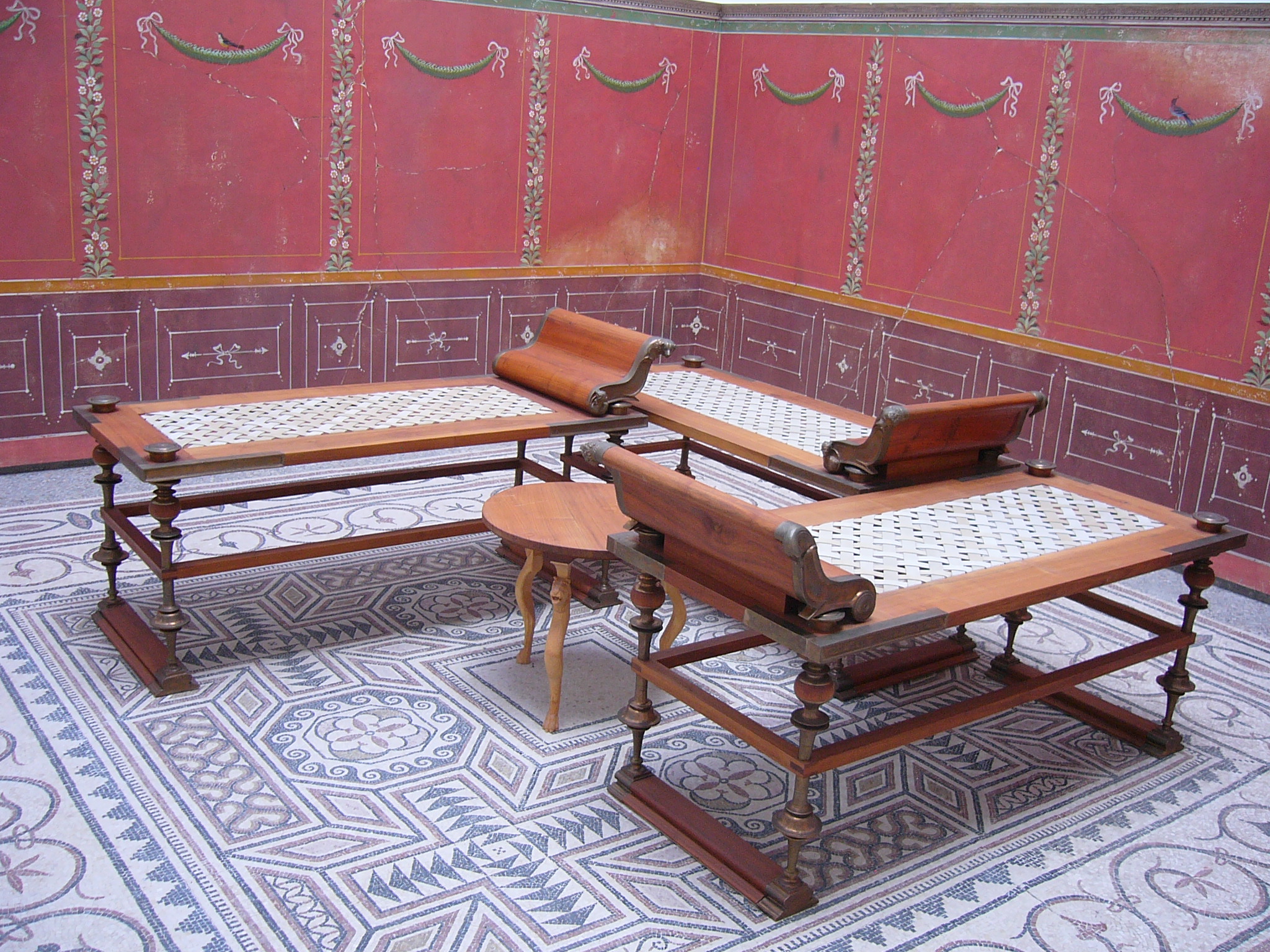The triclinium was a significant feature of ancient Roman culture, representing the social and culinary customs of the time. Derived from the Latin word “triclinium,” meaning “three couches,” it was a dining room where Romans would gather to enjoy meals, engage in lively conversations, and indulge in lavish feasts. Exploring the triclinium offers a glimpse into the rich history and dining traditions of ancient Rome.
Layout and Structure: The triclinium was typically designed in a rectangular shape, with three couches placed along three sides of a low table. The couches were known as klinai, and each could accommodate three diners, allowing a total of nine guests to recline comfortably. The arrangement of the couches formed a U-shape, creating an intimate setting for conversation and interaction among the guests.
Dining Etiquette: The triclinium followed a specific dining etiquette, reflecting the social hierarchy and customs of ancient Roman society. The guest of honor would recline on the center couch, known as the lectus medius or the “middle couch,” while the other guests occupied the side couches. This seating arrangement symbolized the hierarchical structure of Roman society, with the most esteemed guest positioned at the center.
Reclining and Dining: Unlike modern dining practices, the Romans preferred to dine while reclining on the triclinium couches. This posture was considered a sign of luxury and relaxation. The guests would lie on their left sides, propped up on their left elbows, and use their right hands to pick and eat the food from the shared platters placed on the table. Servants and slaves would attend to the guests, serving the food and attending to their needs throughout the meal.
The Culinary Experience: Dining in the triclinium was a multisensory experience that emphasized indulgence and pleasure. Elaborate and sumptuous meals were prepared, reflecting the culinary prowess of the Roman chefs. The menus comprised multiple courses, including appetizers, main courses, and desserts, accompanied by a variety of wines and beverages.

The Romans enjoyed a wide array of dishes, incorporating ingredients such as meat, fish, fruits, vegetables, herbs, and spices. Delicacies such as roasted meats, seafood, exotic fruits, and sweet pastries adorned the triclinium table. The Romans valued the art of dining, and the presentation of the food was as important as its taste. Elaborate tableware, including silver and bronze utensils, fine pottery, and ornate glassware, added to the visual appeal of the dining experience.
Cultural Significance: Beyond its culinary significance, the triclinium played a vital role in Roman social and cultural life. It provided a platform for socializing, networking, and fostering relationships. The triclinium was not limited to private residences but could also be found in public spaces, such as villas, banquet halls, and communal dining areas.
The triclinium served as a venue for philosophical discussions, intellectual debates, and entertainment. Musicians, poets, and performers would entertain the guests, enhancing the overall ambiance and enjoyment of the meal.
Today’s Legacy: While the triclinium has faded into history, its influence and legacy can still be seen in modern dining customs. The practice of reclining while dining has evolved into a more informal sitting arrangement, but the concept of shared meals, lively conversations, and the enjoyment of good food and company remains central to social gatherings.
Visiting archaeological sites, museums, and ancient Roman ruins allows visitors to witness the remnants of triclinia and gain insight into the dining traditions of the past. The triclinium serves as a reminder of the rich cultural heritage and the importance of communal dining in ancient Roman society.
Exploring the tricliniums in archaeological sites, such as Pompeii or Herculaneum in Italy, provides a unique opportunity to witness the layout, design, and decor of these ancient dining rooms. The preserved frescoes, mosaics, and architectural elements offer a glimpse into the opulence and artistic taste of the time.
Additionally, many museums house artifacts and displays related to the triclinium, including tableware, utensils, and decorative pieces that were used during Roman banquets. These exhibits provide a deeper understanding of the craftsmanship and aesthetic appreciation of the Romans.
To fully immerse yourself in the triclinium experience, some modern restaurants and venues around the world offer themed dining experiences inspired by ancient Roman traditions. These establishments recreate the ambiance, seating arrangements, and culinary delights reminiscent of the triclinium, allowing guests to step back in time and enjoy a taste of ancient Roman dining.
In conclusion, the triclinium
holds a special place in Roman history and culture, representing the social customs, culinary indulgence, and communal spirit of ancient Roman society. Its influence can still be felt today, reminding us of the importance of shared meals, engaging conversations, and the enjoyment of good food and company. Exploring the triclinium provides a fascinating journey into the past, allowing us to appreciate the legacy and enduring relevance of this ancient Roman dining tradition.
Book Your Flights : Here 30% OFF on Booking
Book Your Hotels : Here 20% OFF on Booking

0 Comment